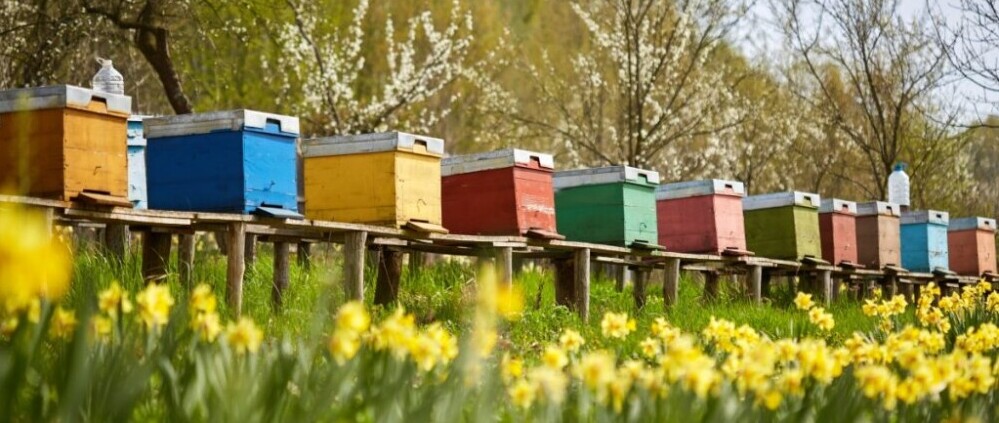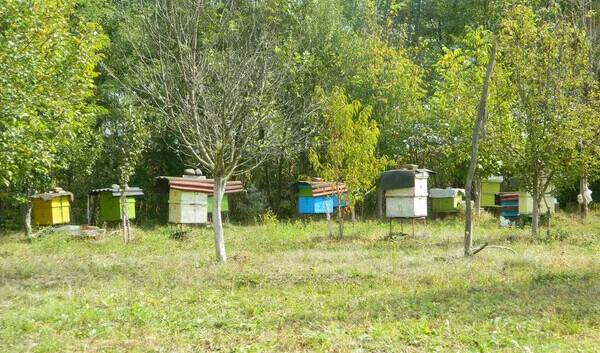Bees are little workers with big needs, and the location of their home base matters more than you might think. A beehive’s location sets the stage for everything from how productive the colony will be to how healthy they stay. Microclimates can significantly affect hive health. It could mean the difference between a load of honey or a struggling hive. Location influences how bees behave, how well they produce, and ultimately, how well they survive.
Now, before you jump into setting up a hive, you gotta consider the legal side of things. Beekeeping might sound chill, but zoning laws in your area could have a say in where you place your hives. Some places have specific rules about how far your hive should be from properties or public spaces. A little research or a quick chat with local authorities can save you from headaches later on.
When you pick that primo spot for your hive, keep the microclimate in mind. Some areas are naturally more accommodating to bees with the right mix of sun, shade, and water. Think of it as real estate for bees: location, location, location! A thoughtfully chosen spot can enhance not only your bees’ productivity but also their overall satisfaction and well-being. Location isn’t just about the view—it’s about survival.
Environmental and Climatic Factors to Consider
Sunlight can be your bees’ best friend. A good dose of morning sun helps your bees get an early start, which is crucial for maximizing productivity. But too much heat isn’t great either; a bit of afternoon shade helps keep their hive cool on those scorching days.
Wind can be a real buzzkill for bees. Placing your hive near a natural windbreak, like some bushes or a well-positioned fence, protects them from gusts that can disrupt their flight patterns. It’s not just about comfort—consistent wind exposure can stress your bees out and affect their performance.
Water sources nearby, like a pond or birdbath, are essential for the bees to stay hydrated and regulate the temperature within the hive. But beware of stagnant water, which can harbor diseases, making a clean, reliable water source a non-negotiable in hive placement.
Safety and Accessibility: Key Considerations for Beehive Placement
 Colorful hives is not just for looks, it helps bees to find their way home.
Colorful hives is not just for looks, it helps bees to find their way home.
When you’re setting up a beehive, the safety of everyone around should be top of mind. You wouldn’t want to plant a hive where curious kids or pets tend to roam. It’s all about striking a balance between keeping your bees happy and avoiding any unexpected stings. A buffer zone between your hives and areas with high foot traffic can save you from potential safety drama.
Now, convenience is king when it comes to tending your bees. You’ll need to visit your hive for regular check-ups, harvesting honey, and ensuring everything’s running smoothly. Choose a spot that’s easy to get to, without having to navigate an obstacle course to reach it. Trust me, you’ll thank yourself later when it’s time to lug around hive tools or heavy honey supers.
While picking your hive location, think about the hive’s exposure to potential disturbances. Nearby roads, noisy machinery, or frequent animal activity can keep your bees on edge and affect their performance. Find a place that’s relatively quiet and undisturbed, letting your buzzing buddies go about their business in peace. A calm environment contributes to a prosperous colony.

Optimizing Your Location for Bee Foraging and Pollination
Nearby flowers and trees are a buffet for your bees. Keeping your hive close to a variety of flowering plants gives them a rich menu to forage from. Bees don’t like travelling too far, so a location loaded with options keeps them happy and working efficiently.
Diversity makes a difference. Encouraging a variety of plant species within foraging distance can give your bees the balanced diet they need. Different plants flower at different times, ensuring your bees aren’t left searching aimlessly when one type stops blooming.
Maximizing pollination isn’t just beneficial for your hive—it’s great for your garden or nearby crops too! Strategically placing your hive can help improve the yield of fruits and vegetables. It’s like hiring the best little garden helpers around.
Your choice of location could not only boost honey production but also improve local biodiversity. Bees play a crucial role in pollinating plants that other species rely on, creating a more balanced ecosystem in the process.
This post may contain affiliate links.

This was such an informative read! As someone who’s interested in sustainable living and mindful about the environment, I’ve been considering starting my own beehive, and your tips on choosing the right location are incredibly helpful. I’m curious—how do you balance finding a spot that gets enough sun but also offers some shade? Do you have any advice on specific plants to place nearby that would benefit the bees but also thrive in a hot climate? I live in Arizona, where the temperatures can be extreme, so I’d love to hear any tips for keeping the hive cool while making sure it’s still productive. Thank you for the great guidance!
Angela M. 🙂
Hi Angela!
Thank you for your comments and questions!
I’m glad to hear from you who live in Arizona because you have a completely different climate than where I live in Sweden.
So, for you it is very important that you choose a location where the hives will not be exposed directly from the midday sun. It would be perfect if you could place the hives under trees or with larger bushes so they can get some shade.
In such a hot climate, ventilation of the beehives is also very important. The hives should have a bottom of sparse netting or plates perforated with holes, so that the air can circulate inside. Another thing is that there should be water near to the hives. A larger bowl with stones in it is enough so they can land and drink the water.
If you want to plant some flower yourself or if it’s grows nerby you, I’ll give some tips for you:
Bee balm (Monarda spp.), White wild indigo (Baptisia alba), Purple coneflower (Echinacea purpurea), Black-eyed susan (Rudbeckia hirta), Joe-pye weed (Eutrochium purpureum), Marsh blazing star (Liatris spicata) and Wrinkleleaf goldenrod (Solidago rugosa)
I hope my advice will help you start your own apiary and you will soon have thriving hives! 🙂
/Mats
.
Hey Mats,
I’ve just had the pleasure of reading your article, “Choosing The Right Location For Your Beehive,” and I must express my genuine admiration for the depth and clarity of the guidance you’ve provided. It’s evident from your writing that you possess a profound understanding of beekeeping and the subtleties involved in ensuring the health and productivity of these remarkable little workers.
Your ability to dissect the complexities of microclimates and their impact on hive health is not only insightful but incredibly practical for anyone embarking on the beekeeping journey. The way you’ve addressed the legal considerations, the importance of a hive’s proximity to water sources, and the clever tip about colourful hives are a testament to your thorough research and commitment to promoting successful beekeeping practices.
Your discussion on the strategic placement of hives to maximize sunlight exposure while protecting bees from excessive heat and wind was particularly compelling. It’s clear that you’ve considered every angle, making it easier for beginners and seasoned beekeepers alike to make informed decisions that will benefit both their bees and their broader ecosystems.
Moreover, your emphasis on the importance of nearby flora for optimal foraging underscores a deep appreciation for not just beekeeping, but also for environmental stewardship. It’s refreshing to see how you tie in the benefits of beekeeping with broader ecological impacts, such as enhanced pollination and biodiversity.
I am so inspired by your article that I am seriously considering taking up beekeeping myself. The insights you’ve shared provide a solid foundation for anyone interested in this fascinating hobby, and I am eager to embark on this journey, armed with your expert advice.
Thank you for sharing your expertise and passion. I look forward to perhaps one day discussing our beekeeping adventures and exchanging notes on our experiences.
All the Best,
Eric
Hi Eric!
Thank you for your comments and kind words!
I’m glad my article was helpful to you and gave you somewhat new insights about beekeping.
I wish you good luck to start your own apiary.
/Mats